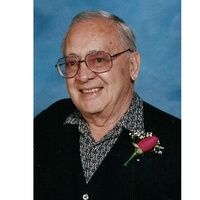NILES, Ill. (BRAIN) — Frank Peter Brilando, a designer and engineer with Schwinn Bicycles for four decades and a two-time cycling Olympian, died Sunday in Niles, Illinois.
He was 93.
Brilando, who started at Schwinn in 1951 as a draftsman before becoming chief engineer, helped create the Sting-Ray and the first derailleur-equipped mass-produced bicycles in the U.S.
"My guess is you will find Frank's name on more patents than anyone other than the Shimano family," said Jay Townley, a former Schwinn executive and bike industry analyst.
Some of those patents Brilando either solely developed or worked on as a team included the quick-release hub retention device, reflector bracket and the unicycle frame.
He also was a contributor to the initial U.S. Consumer Product Safety Commission on bicycle safety standards.
"I don't think the American bicycle business appreciates or understands its history or contribution folks like Frank P. Brilando made to elevating bicycle design and manufacturing to the level the young people populating the industry today have been able to build on,'' Townley said.
Brilando also competed in the 1948 and 1952 Summer Olympics and raced in Europe and Japan.
It was with Al Fritz, who died in 2013, whom Brilando teamed with to create the Sting-Ray, Varsity and Continental bicycles. They also worked together on the Airdyne full-body fan-resistance exercise bike.
"He was the epitome of expertise in our industry," said Fritz's son, Mike Fritz, who succeeded Brilando as director of engineering after Brilando was promoted to senior vice president in 1986. Brilando retired in 1994.
Mike Fritz said Brilando's quest to find the proper mechanical solutions once led to an amusing scene in a Taiwan conference room where the Schwinn brain trust discussed the Airdyne. The team was trying to figure out the proper crossover pattern (the relationship between the rider's arm position on the handles vs. the foot position on the pedals) when Brilando had an inspiration.
He figured the ideal pattern would be reflected by the arm and leg coordination of a baby crawling on the floor.
"So Frank gets down on the floor of the conference room and starts crawling like a baby," Fritz said. "He wanted to understand the natural physiology of the upper and lower body synchronization as experienced on the Airdyne."
Brilando was a World War II veteran (1943-'46) in the Army Corps of Engineers. He graduated from the Illinois Institute of Technology in 1951 with a Bachelor of Science in mechanical engineering.
He is survived by wife Mary Lou, daughter Lia and son Guy, three grandkids and two great grandkids. The visitation and service will be May 11 at the Skaja Terrace Funeral Home in Niles. Visitation is from 3-8 p.m., and the service begins at 7 p.m. In lieu of flowers, contributions to the American Diabetes Association are suggested.




